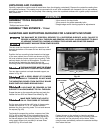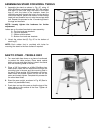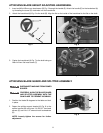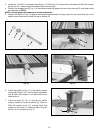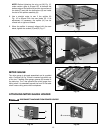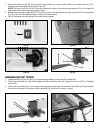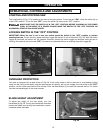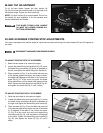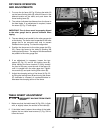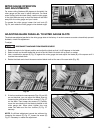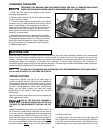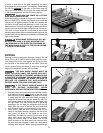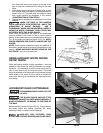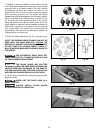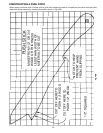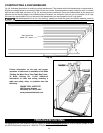
17
RIP FENCE OPERATION
AND ADJUSTMENTS
1. To move the rip fence (A) Fig. 33 along the table, lift
up the fence locking lever (B), slide the fence to the
desired location on the table, and push down the
fence locking lever (B).
2. The pointer indicates the distance from the fence to
the saw blade. If an adjustment is required, loosen
the screw (C) Fig. 37 and adjust.
IMPORTANT: The rip fence must be properly aligned
to the miter gauge slot to prevent kickback when
ripping.
3. The saw blade is set parallel to the miter gauge slot
at the factory. The fence must be parallel to the miter
gauge slot to do accurate work and to prevent
kickback when ripping. To check the alignment:
4. Position the fence next to the miter gauge slot (Fig.
33). Clamp the fence to the table by pushing the
locking lever (B) down . The edge of the fence should
be parallel to the miter gauge slot.
Fig. 33
TABLE INSERT ADJUSTMENT
1. Make sure that the table insert (A) Fig. 33A, is flush
with, or slightly below, the surface of the table (B).
2. If the table insert is above the surface of the table,
tighten the two table insert screws (C) Fig. 33A to
lower the insert.
Fig. 33A
A
B
C
A
D
E
F
B
C
6. If an adjustment is necessary, loosen the two
screws (D) Fig. 33, and lift the locking lever (B).
While holding the fence bracket (F) firmly toward
the front of the saw, move the rear of the fence (A)
until it is parallel with the miter gage slot. Tighten
two screws (D) and push locking lever down (B).
7. Adjust the clamping action of the fence (A) Fig. 33
by lifting the locking lever (B) and turning the screw
(E) clockwise to increase, or counterclockwise to
decrease the clamping action of the fence.
DISCONNECT MACHINE FROM POWER
SOURCE.



